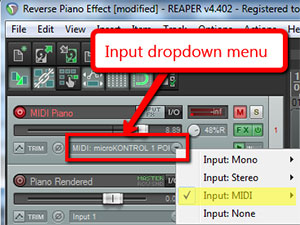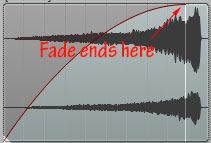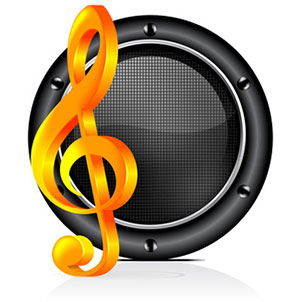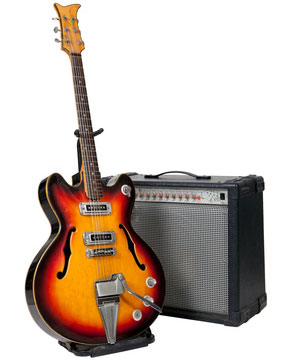 One major goal of most audio recording projects is to create a natural sounding product for the listener – in much the same way that video seems to look better to us, less “flat,” when it has more depth and dimension. Note how popular it is to see movies in 3D. But even without 3D movie effects and glasses, film makers started using focus and blur, light and shadow, forced perspective, etc. to help create a more realistic space for the viewer. You can do similar things in audio.
One major goal of most audio recording projects is to create a natural sounding product for the listener – in much the same way that video seems to look better to us, less “flat,” when it has more depth and dimension. Note how popular it is to see movies in 3D. But even without 3D movie effects and glasses, film makers started using focus and blur, light and shadow, forced perspective, etc. to help create a more realistic space for the viewer. You can do similar things in audio.
One way this can be done, especially when recording music (since there are usually many sound sources), is to provide the listener with cues that give the audio some space – in multiple dimensions – as they are used to hearing it in real life.
Left-to-right
Most listening devices are stereo or better (surround, for example) these days. So you should take advantage of that. Multi-track recording software (DAWs) allow you to “pan” each track to the left or right by as much as you want. So you can spread things out from left to right to make them sound to the listener like the instruments are spread out as they would be in real life.
Sometimes you might want to widen a single sound. For example, a piano almost always sounds best when it is recorded in stereo. The instrument is large and wide in real life and people typically expect to hear it that way on a recording too. But what if you only have a mono recording of a piano? How can you widen it? Well, you can use a technique that plays a trick on the listener’s brain – called the Haas Effect. You can read more detail about this in our post The Haas Effect, but basically you can make a copy of a mono track, delay it slightly in time, and then pan both versions apart.
Of course certain things may be recorded in stereo – either with two mics or a stereo mic – and others in mono. Then you space things out across the horizontal spectrum to give them a more natural feel.
Front-to-back
Another thing people are used to is natural reverberation. You may not notice it in real life, when speaking to someone. But if somehow the voice of the person your were talking to were to suddenly lose all room reverberation (which is what happens when the sound bounces off the walls, ceilings, and everything around it), it would sound very odd. So in your recordings, in order to make something sound more natural (assuming that’s what you want – which you may not. For example, some kinds of voice-overs intentionally sound a bit unnatural – deep and in-your-face like it’s coming from inside your brain), it helps to add some front-to-back space using reverb effects. For example, if a voice or other instrument sounds too “up-front,” you can give the illusion of pushing it back and further away by adding some reverb.
Another way to make things sound further away is by turning them down. In real life, things that are farther away have less volume than the same sound up close. This is one of the most basic things you do when mixing sounds together.
Bottom-to-top
This idea may be more applicable to making a music mix sound more full, rather than more natural. But it does help to fill out a sound pallet for a listener. Try to provide sound that covers the frequency spectrum from low/deep sounds like bass guitar, kick drum, tympani, bass fiddle, etc. all the way to high sounds like cymbals, high-hats, tambourines, piccolos, guitars capo’d way up, etc. The middle frequencies can be filled with voices, guitars, pianos, violins, violas, etc.
The way we use this in our music recordings is to listen to a mix and decide if there is a hole somewhere, or if we are missing highs or lows. For example, we were working on a song that had a guitar with no capo, a bass, a bodhran hand drum and a male voice with male harmony. It was decidedly “low-heavy.” That told us we needed to add some higher frequency stuff to help balance it out. So we added a guitar with a capo on the 5th and/or 7th fret, a female harmony, and a tambourine. We might also have added a mandolin, flute, high fiddle, etc. Doing that really helped to provide a full and rich sound that was balanced.
So to sum up, you can really improve your audio recordings by adding more depth and dimension using several pretty common recording techniques.
Hope that gives you some tips to make your audio sound awesome!
 If you’ve watched TV in the last few years, you’ve heard it. There is a sound effect, usually in cop dramas (though I heard it in an episode of Dr. Who recently!), that always comes in just after a character says something dramatic, almost always at the end of a scene. I think I first noticed it on the CSI shows. Then I started hearing it everywhere! It seems like every TV show producer feels they need to have this effect in their show about 10 times per episode nowadays. It sounds like this:
If you’ve watched TV in the last few years, you’ve heard it. There is a sound effect, usually in cop dramas (though I heard it in an episode of Dr. Who recently!), that always comes in just after a character says something dramatic, almost always at the end of a scene. I think I first noticed it on the CSI shows. Then I started hearing it everywhere! It seems like every TV show producer feels they need to have this effect in their show about 10 times per episode nowadays. It sounds like this: I started out with a single track in Reaper. I used a virtual instrument – a piano – using MIDI. To do that, simply choose “Input: MIDI” from the Input drop-down menu on the track control panel (see the illustration on the right). You can use any VSTi piano plug-in. I used the one in The Garritan Personal Orchestra. Of course, you can also do this by actually recording a REAL piano:).
I started out with a single track in Reaper. I used a virtual instrument – a piano – using MIDI. To do that, simply choose “Input: MIDI” from the Input drop-down menu on the track control panel (see the illustration on the right). You can use any VSTi piano plug-in. I used the one in The Garritan Personal Orchestra. Of course, you can also do this by actually recording a REAL piano:). Finally, all you have to do is create a long fade-in. Just hover your mouse over the top left corner of the audio item until the cursor changes into the “fade” icon. Then just click and drag to the right to make the fade end just before the last bit of audio.
Finally, all you have to do is create a long fade-in. Just hover your mouse over the top left corner of the audio item until the cursor changes into the “fade” icon. Then just click and drag to the right to make the fade end just before the last bit of audio. Your monitoring setup is super important if you are recording music. I would say that it is much less important for voice-over or video narration for a number of reasons, but primarily due to the fact that only your voice is being recorded, which is a pretty simple sound source at a predictable frequency that it doesn’t have to share.
Your monitoring setup is super important if you are recording music. I would say that it is much less important for voice-over or video narration for a number of reasons, but primarily due to the fact that only your voice is being recorded, which is a pretty simple sound source at a predictable frequency that it doesn’t have to share. Here is an excellent video – another one from WinkSound – showing you how to liven up your electric guitar tracks, especially if you record them dry/direct into your computer and then run it through an amp simulator. This video shows you how to do it using Pro Tools. But the same concedpts apply with any DAW, including Reaper.
Here is an excellent video – another one from WinkSound – showing you how to liven up your electric guitar tracks, especially if you record them dry/direct into your computer and then run it through an amp simulator. This video shows you how to do it using Pro Tools. But the same concedpts apply with any DAW, including Reaper.